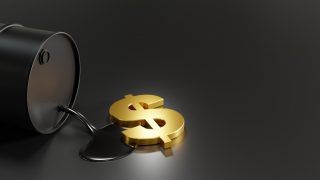Investors in exchange-traded funds (ETFs) need to be able to distinguish between the different choices to choose wisely.
Seek ETFs that align with your goals, risk tolerance and strategy. ETFs overall offer many advantages and varieties that range from the least risky fixed income and blended funds through medium risk equity and commodity funds to the riskiest leveraged ETFs.
Currently, around 1,600 exchange-traded funds are available in the United States and 4,000 more are available internationally. Categorizing all of the ETFs into types will help to identify the individual funds best suited for you.
The sheer number and variety of available ETF types can be overwhelming and can make simple classification difficult. Additionally, most ETFs will fall into several categories, based on the type of investment they hold, their geographic scope, size of underlying holdings, etc.
First, I will break down ETF types into five broad categories: Equities, Fixed income, Commodities, Currencies and Alternatives.
Equities
An equity exchange-traded fund invests primarily in publicly traded companies’ stocks. We have domestic ETFs that only invest in companies in the United States and international funds that invest in international companies and markets.
These two types of equity funds can be broken down further. We have domestic index ETFs, which are blended funds that offer diversified exposure to entire markets. Sector funds invest only in companies from one segment of the economy, such as technology, health care or energy. These ETFs carry a slightly higher risk because of somewhat limited diversification. Therefore, I would advise against holding all of your assets in a single sector fund.
Next, we have income and cash flow-focused funds that invest in dividend-paying stocks. Some funds are broken down by the size of a company to track small-cap, mid-cap or large-cap stocks. Another classification consists of funds that invest in either value stocks or growth stocks.
Obviously, most stocks will fit easily into multiple categories. For example, a dividend-paying, mid-cap technology stock with a growth strategy falls into four of the five categories.
International funds take a worldwide investment focus, in contrast to domestic funds. However, international ETFs also can have unique geographic regions and distinguish between emerging markets and developed ones. Thus, some funds invest in stocks from a single continent, geographic region or a particular country.
Fixed Income
Fixed income generally means investing in bonds. While potential returns are usually lower than stocks and mutual funds, income-oriented and risk-averse investors like this category because of reduced risk and low volatility. Just like equity funds, fixed-income funds can be domestic and international.
Domestic fixed income ETFs focus on government bonds, corporate bonds, high-yield bonds and municipal bonds. In some cases, fixed income funds can generate tax-free income.
International fixed-income ETFs have the same types as domestic funds and few additional geographically related versions. Therefore, international fixed-income funds also invest in developed markets, emerging markets, single country markets or individual country’s sovereign funds.
Additionally, both domestic and international fixed-income funds can choose to invest in a combination of the different fund types. These ETFs are called blended funds.
Commodities
The focus of investing in commodities makes exchange-traded funds unique. Through these funds, you can invest in various raw materials.
Blended ETFs offer exposure to a diversified selection of commodities. There also are funds that invest in a narrow group of commodities — precious metals, agricultural products, energy, or rare earth metals.
Lastly, some funds offer investment opportunities in single commodities. You can buy exchange-traded funds that invest in gold, silver, copper, thorium, corn, soy or any other commodity — even water.
Currencies
An alternative to trading in foreign currency exchanges are currency ETFs. While some funds hold a basket of different currencies, others focus on single currencies. You can invest in U.S. dollars or in foreign currencies, such as the Japanese yen, Canadian dollar or Brazilian real. The currency category is not too complicated. Your choices are limited and most investors do not trade currency funds frequently.
Alternatives
Finally, we have the alternative fund category. I should caution you that alternative ETFs can be risky. Veteran traders and institutional investors use these funds to pursue potentially high returns. However, this is not something that I recommend to anyone but the most experienced investors. Even then, alternative ETFs should be used sparingly.
But, I want you to be aware of all available options. One type in this category consists of inverse funds, which allow you to short the market. Leveraged funds use debt and financial derivatives to enhance returns. Long and short ETFs sell some stocks short and buy some stocks long. Like all types of ETFs, we have also blended funds that use a combination of the other types to execute their strategy.
Exchange-traded funds are simple at their core. But the sheer number and multiple types of ETFs can make it seem overwhelming. I believe that the biggest reason investors shy away from investing in exchange-traded funds is a knowledge gap.
However, if you understand the different types of funds described here, if you learn a few ETF basics, if you know limitations of mutual funds, if you are aware where you can trade ETFs for free and if you follow few simple rules, you too can become a successful exchange-traded funds investor.

Doug Fabian is the editor of three publications: Successful ETF Investing, ETF Trader’s Edge, and Fabian’s Weekly ETF Report. Doug was previously known as one of America’s top mutual fund advisors, but in recent years he has made a revolutionary 100% shift to exchange traded funds (ETFs). He regularly appears at seminars around the country.



